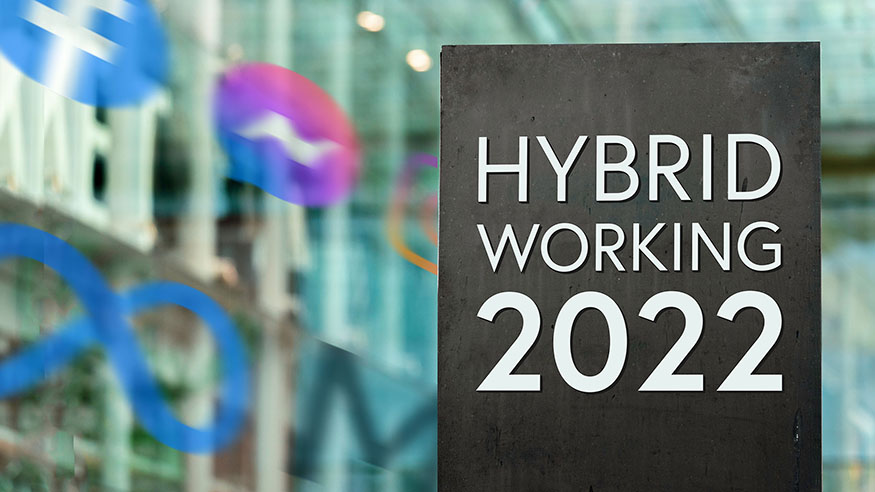We’re back discussing the hybrid workplace as Austin’s office buildings return to near-empty during the Omicron surge. Throughout the pandemic, the hybrid workplace—combining remote and in-person work options and requirements—gained steam. At first, it was a necessity. Then it became a preference among employees.
Where do we stand now?
Facebook’s Meta is doubling down on Austin office space with a recent announcement it’s leasing “all the office space in a 66-story, mixed-use tower that will be the city’s tallest building when it is completed next year,” reports the Austin American-Stateman. More Google employees will be mingling with Meta’s downtown with its own newly signed lease for an entire 35-story tower under construction in the heart of the city.
Do these large physical workspace investments mean that the big tech companies are moving away from remote and hybrid workplace models? Not exactly.
Meta’s employees were expected to begin returning to the office this month, “although the company is offering employees options that include requesting the ability to work remotely permanently or deferring their return,” Statesman reports.
“The economic decisions that these companies are making are for the long game and not necessarily for the short-term impact,” says the Downtown Austin Alliance’s Janet Moffett. Office spaces are being reconfigured for hybrid interactions and shared spaces. In short, the future of the hybrid workplace is to come into the office for a reason, not out of obligation. According to the Harvard Business Review, traditional office buildings are becoming “a culture space, providing workers with a social anchor, facilitating connections, enabling learning, and fostering unscripted, innovative collaboration.”
“What we’ve all learned during the pandemic is that hybrid work works,” says Dave Benjamin, Practice Director-Professional Services at The HT Group. “Many employees are much more productive and comfortable at home. But they also understand and appreciate office space for in-person collaboration. So, top job candidates are putting at least a hybrid workplace (if not fully remote) at the top of their wish lists and they’re making it non-negotiable.”
“Right now, if you’re not offering a flexible or remote program, you’re missing out on 50% to 70% of candidates,” adds Rey Ramirez, co-founder of Thrive HR Consulting.
Here are four ways to make your hybrid workplace work:
- Have a clear plan. A recent EY poll shows 90% of employees want flexibility. Most companies are responding, with 79% intending to make moderate to extensive hybrid workplace changes. But only 40% have communicated these plans to their workforce. The study concludes that this lack of clarity has created a disconnect with employees (and potential employees).
- Be upfront. If you know that work flexibility is on the mind of nearly every single job candidate, don’t make them guess where you stand on the issue. As much as you can, mention your hybrid workplace plan on your career page and in your job descriptions. Bring it up early on in your interview process. Do not make your job candidates ask about it moments before they accept (or reject) your offer.
- Trust the process. Your hybrid workplace plan shouldn’t be a point of contention. If it is, rethink your culture—is a hybrid workplace truly supported in your organization and by your management? “At the heart of successful hybrid working is trust,” says HR software provider WeThrive. “But one in three people don’t trust their employers. And nearly half of employees report feeling distrusted at work, resulting in anxiety and stress, which we know has a significant impact on people’s wellbeing, engagement and productivity.” In short, a bait-and-switch approach—touting a healthy hybrid workplace when that’s not the case—will send new hires heading for the door in record speed.
- Revisit and listen. As we now know, conditions change rapidly. The hybrid workplace you set up now will need to expand and contract as needed. As we saw this past summer, many workers were eager to return to the office if they felt safe and supported in doing so. Sales teams and others who thrive on person-to-person interactions suffered immensely by staying home. One report showed that, during the pandemic, professional and personal networks alike shrunk by 16%. Take regular pulse surveys of your workers to find out where they’re at and how their needs are changing.
Talk to your HT Group recruiter about matching job candidates who share your hybrid workplace philosophy. And if you’re having trouble clarifying that philosophy, our consultants can help.




